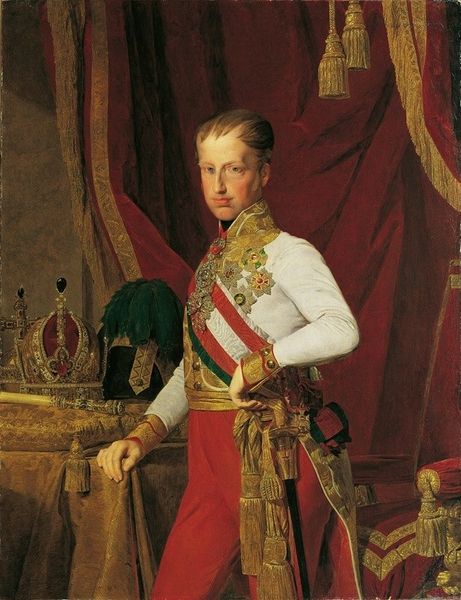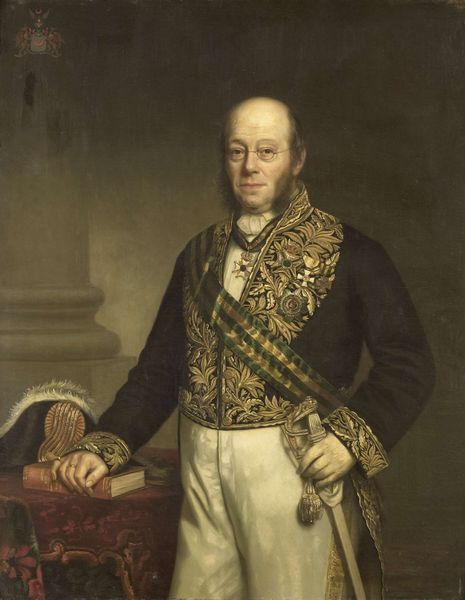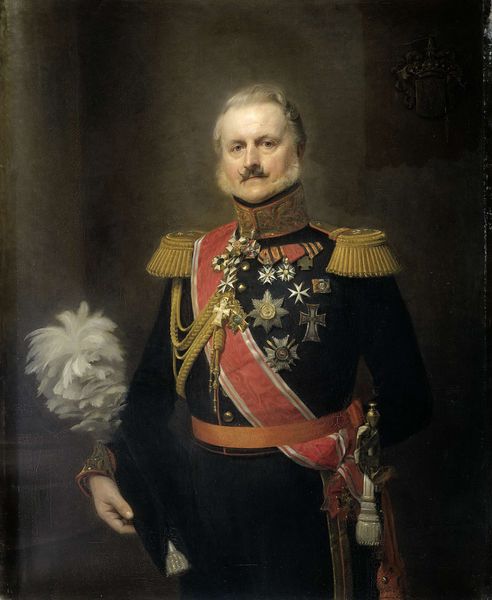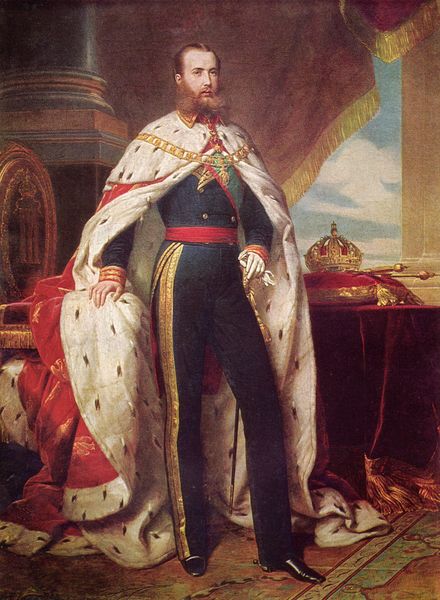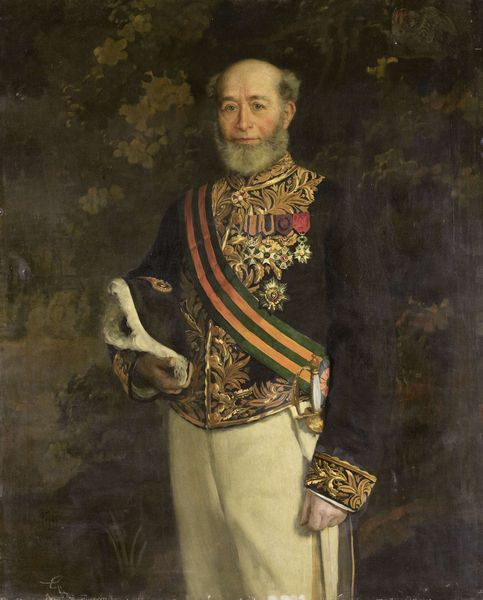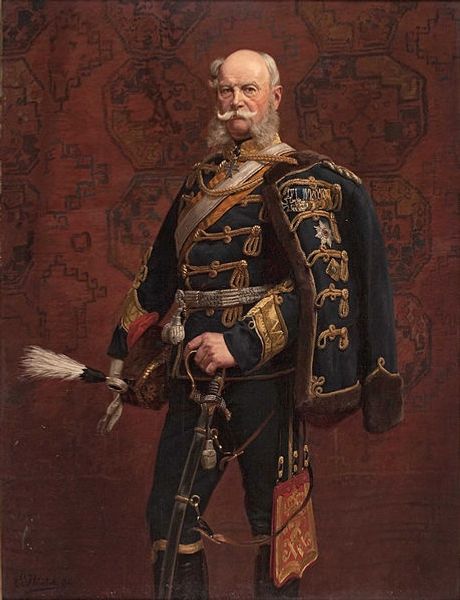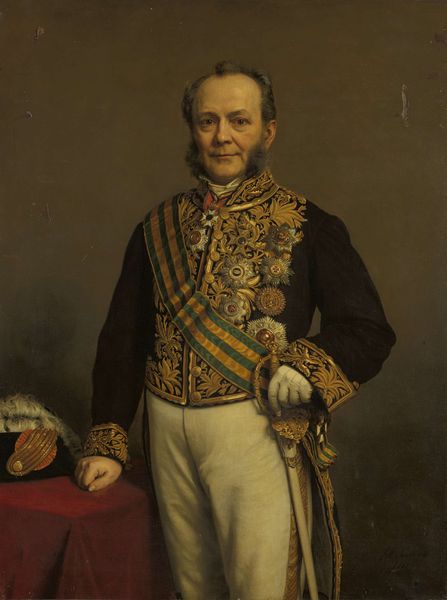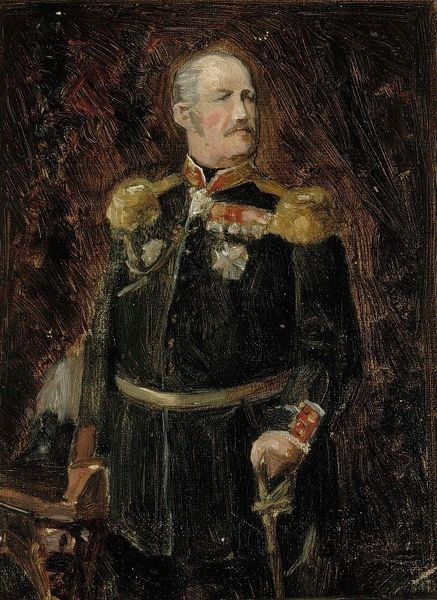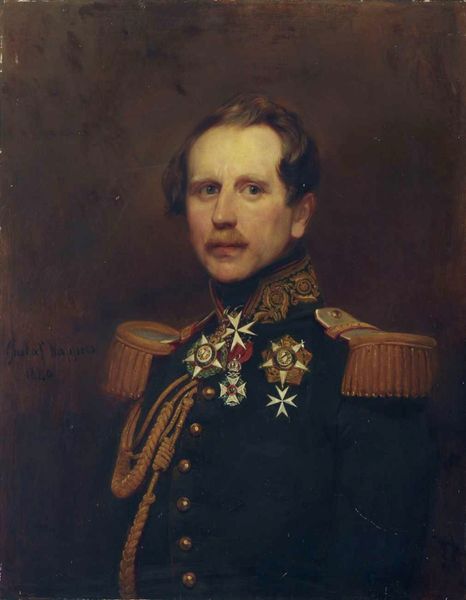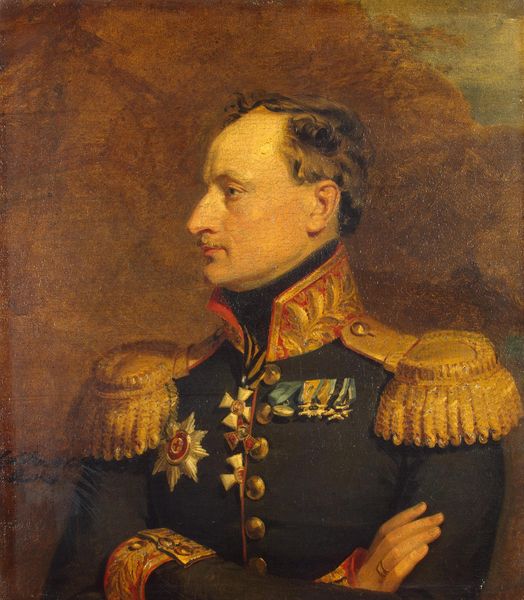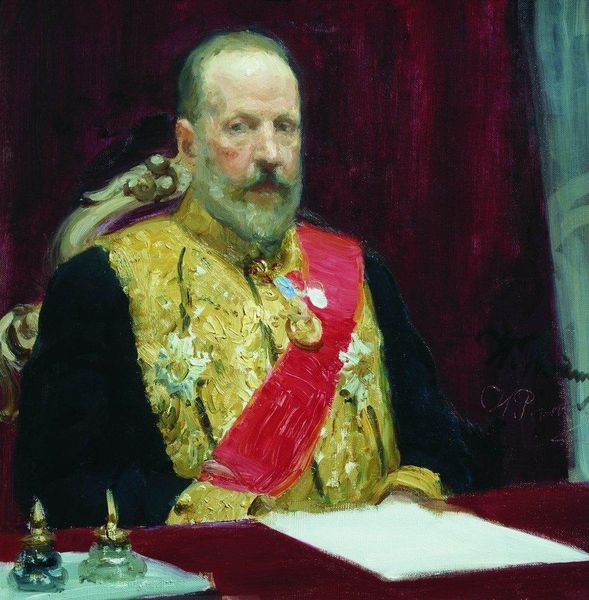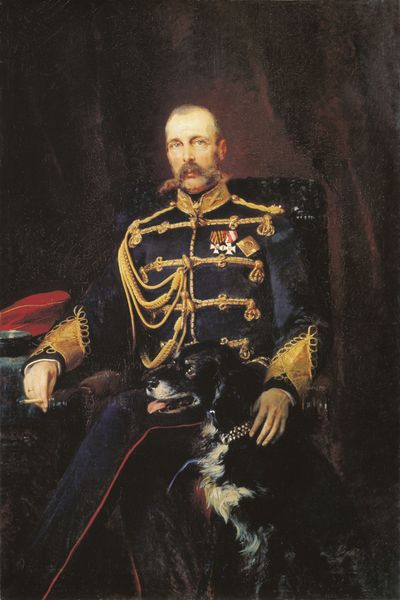
#
character portrait
#
oil painting
#
portrait reference
#
portrait head and shoulder
#
arch
#
portrait drawing
#
facial portrait
#
portrait art
#
fine art portrait
#
celebrity portrait
#
digital portrait
Copyright: Public domain
Curator: Look at the formality of this image! Here we have Johann Koler's "Portrait of Dr. Philipp Karell, Emperor's Physician," painted in 1886. A classic, official portrait in oils. Editor: The sheer weight of those epaulettes! He appears burdened, almost weary, despite all the regalia. It’s as if the symbols are pressing him down. Curator: Absolutely. Karell wasn’t just any physician; he was physician to the Emperor, holding a crucial position within the Russian Imperial Court. Koler captures that tension. We see not just a man, but the embodiment of Imperial authority and responsibility. Editor: The objects around him—the miniatures, the neatly organized documents—they speak of order and legacy, but also of the constraints of such a position. He’s holding what appears to be a letter, perhaps a decree or diagnosis with significant consequence. Curator: I agree. Think of the societal pressures he would have been under. Koler was a master of understanding political expectations and visualizing how court society wanted to be represented. The stern gaze, the controlled pose – this projects power but also a specific idea of Imperial stability during a period of reform and upheaval. Editor: I'm drawn to the sternness of his face against the softness of his immaculate, almost otherworldly, beard. It’s as if that facial hair symbolizes wisdom but also a detachment from the common world. The window view painting from Karell’s collection with the cottage looks like a promise or a memory of simplicity. Curator: And look at the colours. Dark greens and reds against the sharp white of his beard and paper. Every color seems calculated to emphasize hierarchy and respectability. The weight of Russian Imperial institutions is tangible. The portrait is interesting not just as a likeness, but as a cultural artifact, embodying that relationship of trust, and how that was visualized through painting for political and social reasons. Editor: A fascinating representation indeed; the details speak of power, burden, and the symbols of legacy. I sense now both authority and isolation in this physician’s portrait. Curator: Exactly, Koler paints much more than just a person, I see now a statement about social structures of obligation.
Comments
No comments
Be the first to comment and join the conversation on the ultimate creative platform.
